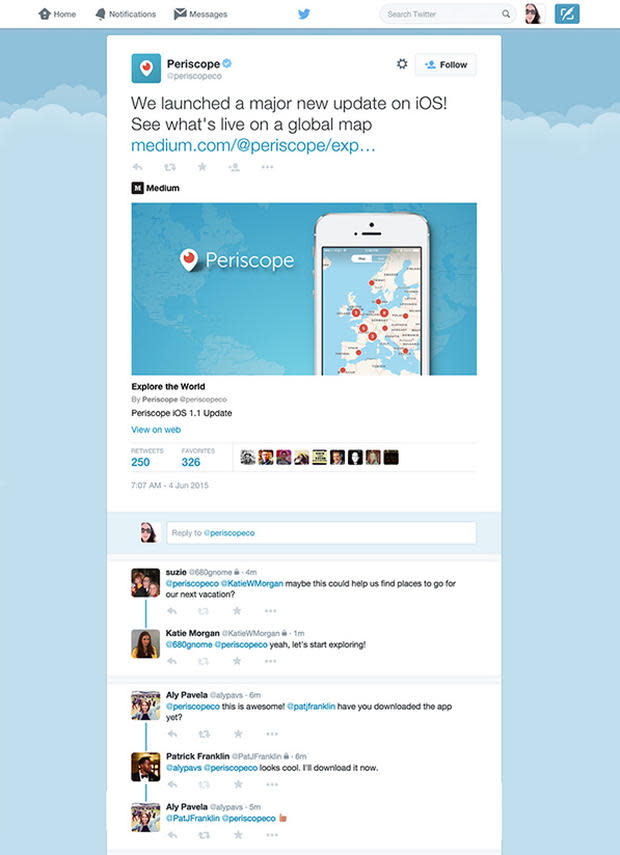Twitter makes your conversations easier to follow
This article, Twitter makes your conversations easier to follow, originally appeared on CNET.com.

How the threaded conversations will look. Twitter
Twitter just got a little easier to navigate.
To help clarify tangled conversation threads, Twitter announced today in a blog post that it's changing the way it deals with replies to tweets and grouping replies together, similar to how it deals with conversations on the home timeline, which was revamped in 2013.
Until now, back-and-forth conversations on the microblogging social network have been something of a mess. Replies to tweets have traditionally been organised chronologically. With popular tweets, which frequently have a bunch of strangers all replying to and conversing with each other, following a single thread can be a tricky business.
"Conversations surrounding a Tweet, particularly if they've sparked lots of replies and disparate conversations, can be hard to follow," said product manager Akarshan Kumar.
"So, we're doing a few things to make this much easier: grouping conversations together and highlighting some of the most interesting exchanges surrounding a given Tweet right below that Tweet. To surface some of the most interesting conversations, we'll take factors into account like whether the original account has replied."
Each conversation will be grouped by a line, showing just a few Tweets in each conversation. To expand a conversation, you will be able to click a "View other replies" option, much like you can already do to expand a conversation in your home timeline.
The move will undoubtedly help make Twitter more accessible and easier to follow, not just for newcomers to the social network, but also for its 302 million active monthly users. It follows a similar move by Facebook, which introduced threaded conversations in March 2013.
The change will be rolled out from today on the Twitter website, with Twitter's mobile apps to follow suit soon.
Also from CNET:

